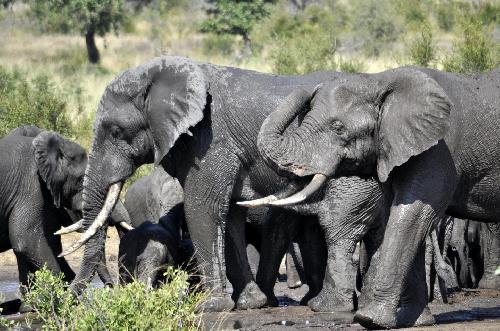Nature reserves and national parks play a crucial role in sheltering wildlife, such as African elephants, from hunting and habitat destruction, but they have no problem at all exhausting the wildlife around them.
Researchers have examined the effect elephants have on the woody plant life in Kruger National Park, the largest protected area in South Africa, and found that elephants are the preserve's leading causes of fallen trees.
"National parks and nature preserves will serve as biodiversity arks as we move into the future," said Carnegie Institution's Greg Asner. "But to manage them properly, conservationists will need to maintain the functionality of the ecosystem as a whole, which will require an understanding of system-wide responses to changing animal populations."
Calling American dentists; this reserve may need fewer elephants.

In South Africa, elephants are protected in both public and private reserves, including Kruger's 1.9 million hectares. Once they are introduced or reintroduced into a safe area, their numbers can grow very quickly and in the past 20 years, the elephant population of Kruger has nearly doubled and continues to grow exponentially.
Conservationists hadn't thought about how to protect nature from the elephants so now they need to create a sustainable system for the surrounding vegetation.
Between 2008 and 2014, the team surveyed more than 10.4 million trees and woody plants across 19 landscapes within Kruger using an airplane-mounted Light Detection and Ranging (LiDAR) sensor. LiDAR uses reflected laser light to image vegetation in 3-D. It enabled the team to determine and rank the different factors that caused trees to fall.
They examined the environmental, biotic, and conservation management factors affecting fallen trees. They found a mean tree-fall rate of 8 trees per hectare (or 12 percent of trees per hectare) every other year, which is considered very high in savanna ecological predictions. The team expected topography and soils to be contributing factors behind observed geographic patterns in tree-fall rate. And they were. But their findings also revealed another major factor in play: the density of the landscape's elephant population. Fire frequency was another contributor, but it was half as important as elephants in determining tree-fall rates.






Comments